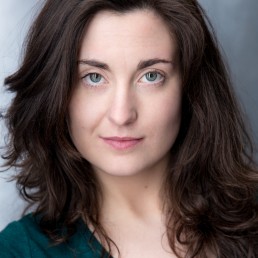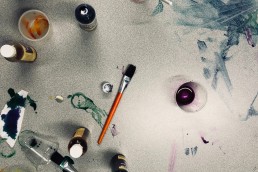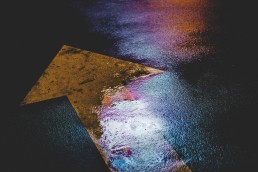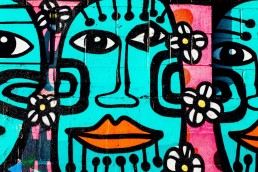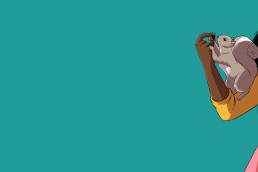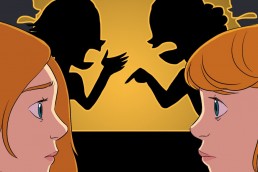By Izzy Pilkington
Photography by Gustave Centurion, via Unsplash
[To read Izzy Pilkington’s previous chapter of her journey into the world of Julia Cameron so far click here. To go back to the first instalment of this series click here]
Back to the once upon a time. Back to the start of the yellow brick road. With every story there are obstacles, trips, falls, but always at the forefront is the goal. The goal will always be there no matter what. No matter how far away it seems. Despite the knowledge and comfort of my goal I didn’t know what to expect from going back to the beginning. It’s a little scary; was the danger of failure still there? (Dramatic pause). Probably. There is always the possibility. Just like the chance of success. Though I don’t see that when I am in that panicked mode. This time round I will lead my exploration with a Samuel Beckett quote, ‘Try again. Fail again. Fail better.’
When (not if) I fail I will fail hard. Fail better and always try better. I will use it as fuel for awesome art. I will use my fear and panic as a sign of change, and not the entrance point to a gapping vortex of despair and misery. I will bring more hope — find my way back to the glow of joy in my times of need. In this article I will explore the new things I’ve gained from re-reading chapters one to four of Walking in this World. In the following piece I will be back to my normal rhythm, with the addition of me delving deeper into my psyche.
Beginning this journey again felt like snuggling into new, clean sheets — refreshing, comforting and joyful. But I was in for a shock because on WEEK ONE new curiosities were ignited. Curiosities I didn’t see before. How could that be? I doubted my sanity, but then concluded that different things sink in when you need it. I’m sure if I read the chapter for a third time something would set even more curiosities alight. Which is a comfort as I’ll always be welcomed back to the pages if I need it. When reading over the chapter questions came into my brain; if we ignore the questions we want to ask the universe do we disconnect ourselves from the universe? I think questions are the energy given to us from the universe to help us. They are at our disposal, So why don’t we use them? Maybe it’s because we want the answer fast, but the universe is not Google. It takes time. Or maybe it’s the fact we don’t believe. It could always be a little of both.
When it comes to resting I find it hard to stop. It’s the part of the brain that tells me I’ll fail if I stop or everything will fall apart if I do. The only way I will achieve is to drive faster and harder. And this is the reason I burn out; a lot. But what drives me? Curiosity, passion, ambition and, though I hate to admit it, my ego. When egos are hurt, we fall and get sucked into the depression cyclone. Ego also hates rest; ego wants to drive you to the edge. When I’m there, I wallow in self-pity. Moaning at the world for bringing this upon me and screaming at it when it doesn’t fix me. But the answer is always right in front of me — action.
The first time I read through chapter one Cameron gave me the tools — I didn’t expect them. But now I know I have twenty actions to help me when I’m in my pit of despair. It’s hard to accept the ego, it’s always seen as a negative. But I think it’s time to see the other side. It’s time I open that conversation with myself.
To follow on from my fabulous ego, let’s skip down the road of self-definition in WEEK TWO. There’s a chill in my spine. The terror — I can get myself right, can’t I? Strange question but there’s a fear I will get me wrong. Why? I think it’s because I put a lot of focus on what other people think of me. I don’t want to be judged. We as humans hold people’s views with significance. Again, why? Because we are told to by social media, TV and our peers. We ignore our gut — but it’s the gut we should be following. Which brings up a new question: where do I want my gut to lead me? Moving on to the fear of the dreaded, terrible tag of being called beheaded and egoistical. Many people exercise these qualities in negative ways, and people want to distance themselves from these negativities. These qualities may have negative aspects but also positive aspects — it drives a person and shows they have confidence in what they do. Like everything human qualities are not black and white — they show contradiction. As artists we will always show contradiction because we are not linear and we are not based on logic. As Antoine de Saint-Exupéry says, “Pure logic is the ruin of the spirit.” This week was all about acknowledging it’s there and accepting it is there. And maybe have a chat with it — what is your big-headedness telling you? What would happen if we indulge in it? Even the negative side, and then clear it. What would happen? Could it mean more productivity? More openness to the ask, receive and believe? Or even the awareness that our panic is only telling us we are becoming unstuck. We are changing.
“When I get stressed, I feel it not only mentally but physically. My back aches, and my mood becomes stormy. There could be many reasons for this. But going back over WEEK THREE I gained an understanding.”
When I get stressed, I feel it not only mentally but physically. My back aches, and my mood becomes stormy. There could be many reasons for this. But going back over WEEK THREE I gained an understanding. When I’m tense knots appear in my back — Cameron gave a theory on this. Is it a coincidence that knot and not sound the same? I don’t think so. My theory is that every time we tell ourselves we’re not to do it or we cannot do it, it adds a new knot to the tension. When we say not or art told not we are not releasing that creative energy. We hold it beyond the surface hoping to forget it’s there. What might be more beneficial is when we or someone tells us not, run to the page and write… release it. Whatever it is. Saying that, does this mean art is a form of therapy? It has been quoted from many of my favourite bands and actors that they see their art as their therapy. But Cameron disagrees. Art is therapeutic not therapy. While both are transformative, they both give you different things. Therapy is an exploration of understanding what’s going on, journeying through the past searching. While art is more direct. It tells us to release, let go, transform it into something more. If we look at art as therapy when a bad critic comes out to play our therapy process would be damaged. We would be back to square one or worse to square zero. If we use it as the direct way to release then it’s out there bad critic or not, it means we are using the magic of the universe. This talk of releasing fits into introducing my favourite task in the whole book- listing fifty things I’m angry about, and I can be as petty as I want to be. If I accept that I’m angry with them then they won’t be more knots. And maybe just maybe it will be fuel for something else. But also it’s a great exercise to view the size of your anger. Are they all little things huddled together? Are they both large and small things? Are the bigger ones feeding the small ones with more significance? What happens if we’re more aware of it?
I loved WEEK FOUR it was about adventure, but also rebelling against adulthood. If I looked in the mirror right at this moment my Peter Pan complex would be showing. I’m not ashamed of that. As we grow older, we get more serious. Why? Because we think we should. They tell us we should. And by doing this we become deprived of adventure, we fall into the quicksand called depression. But how do we get out of the quicksand? Take action. However long it takes. We have to delight ourselves, find our joy and curiosity instead of trying to improve ourselves. The word “trying” is telling the universe we are lacking. The more we lack the more we try. It is a cycle. A vicious one. What happens if we stop and ask? Stop and enjoy. Instead of worrying about creating high art change to hi art!
I am ridiculously happy that I went back to the beginning — I have gained so much more insight and other things I actively ignored. Re-playing this chapter has brought be more awareness and ways to help myself. For a while now I have been trying to improve myself — instead of enjoying the journey to joy. I have created a toxic bubble, from now on I want to be more aware where I place my significance. And release any anger I have — even the most petty.
“From now on I want to be more aware where I place my significance. And release any anger I have — even the most petty.”
Use the fuel you have. Even post a picture of the Joker saying ‘why so serious’ as a reminder. Below I have written down a little checklist for anyone who needs it. Write it down, put it in your diary and go walk and create. Next time we will explore my experience of the fifth and sixth weeks of the book. Wish me luck!
- Write out 20 small actions you could do in a situation where you are not feeling the best.
- For 15 minutes turn on music and do nothing.
- Take a walk in nature,
- List 50 things you’re angry about.
Izzy Pilkington
Izzy Pilkington is an Irish actor/writer, based both in London and Dublin. She trained with the Bull Alley Training Theatre Company, and then on the MA course at East 15. Her aim is always to find her joy and help others find theirs, to give a voice to mental health, and to explore all the stories in her imagination.

